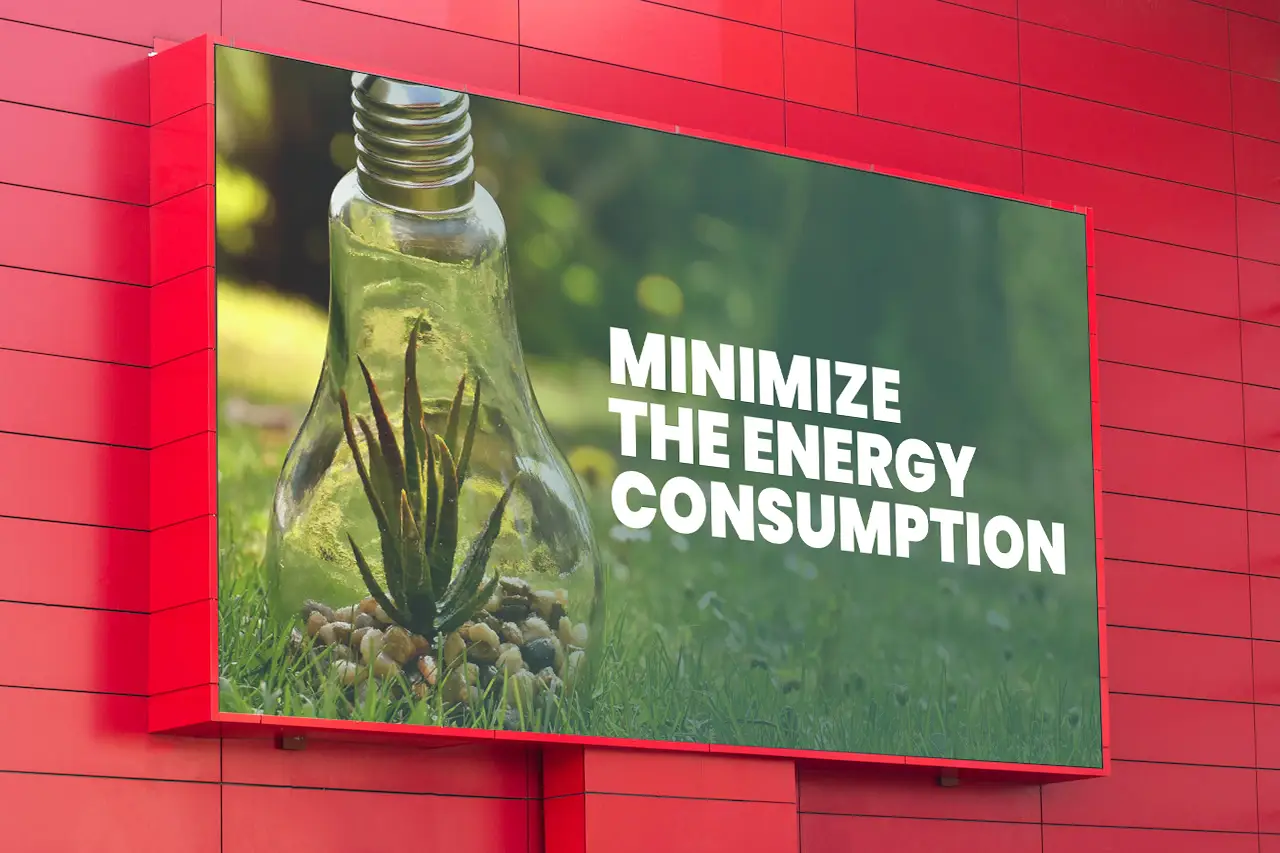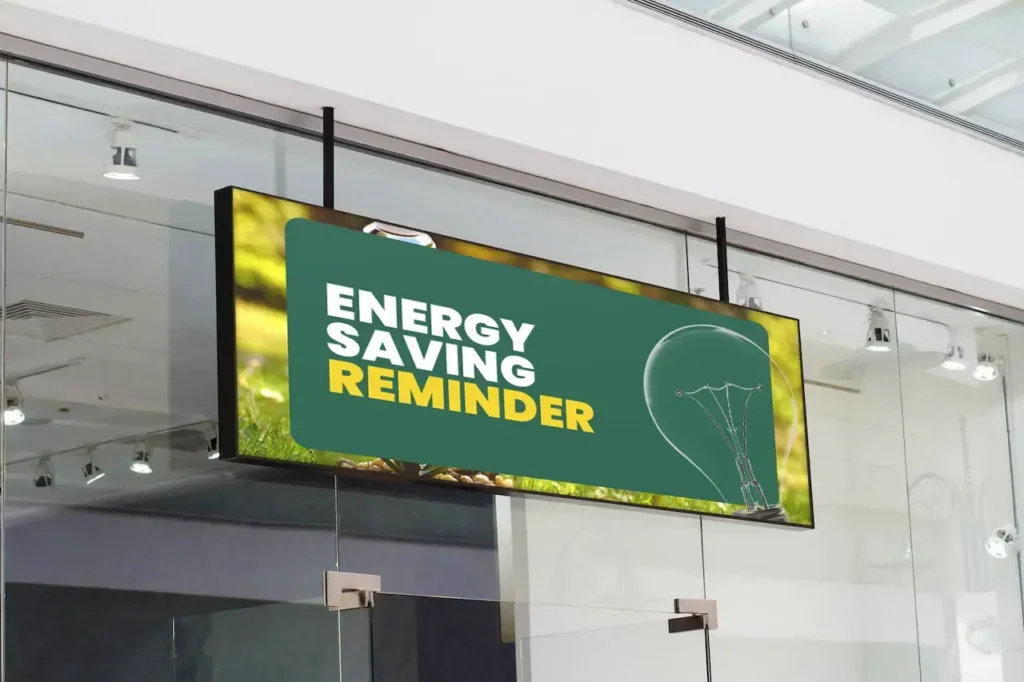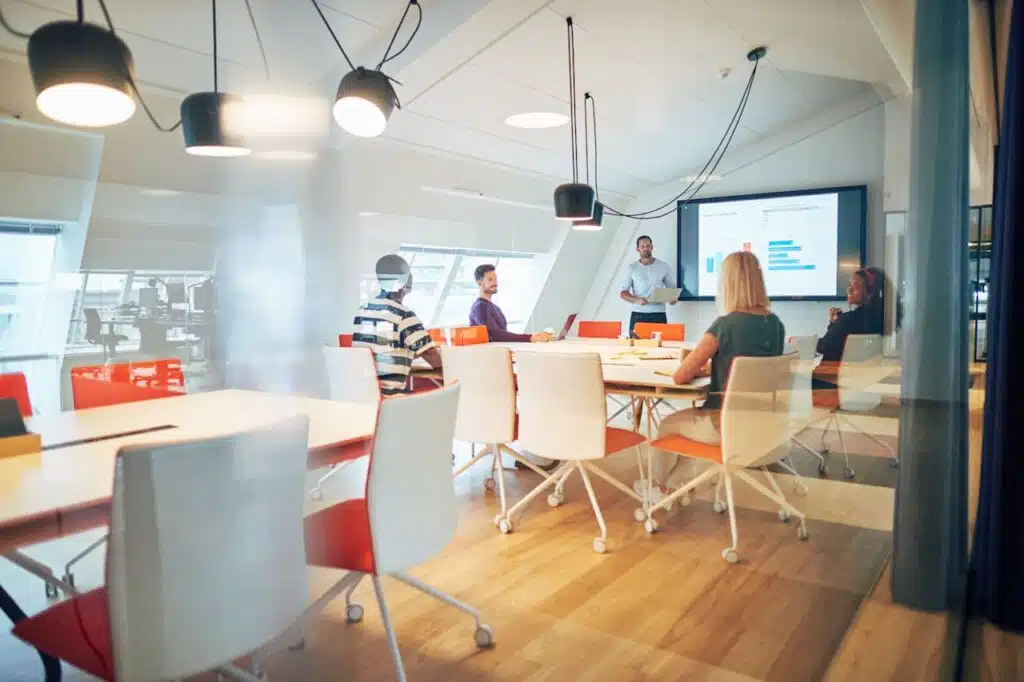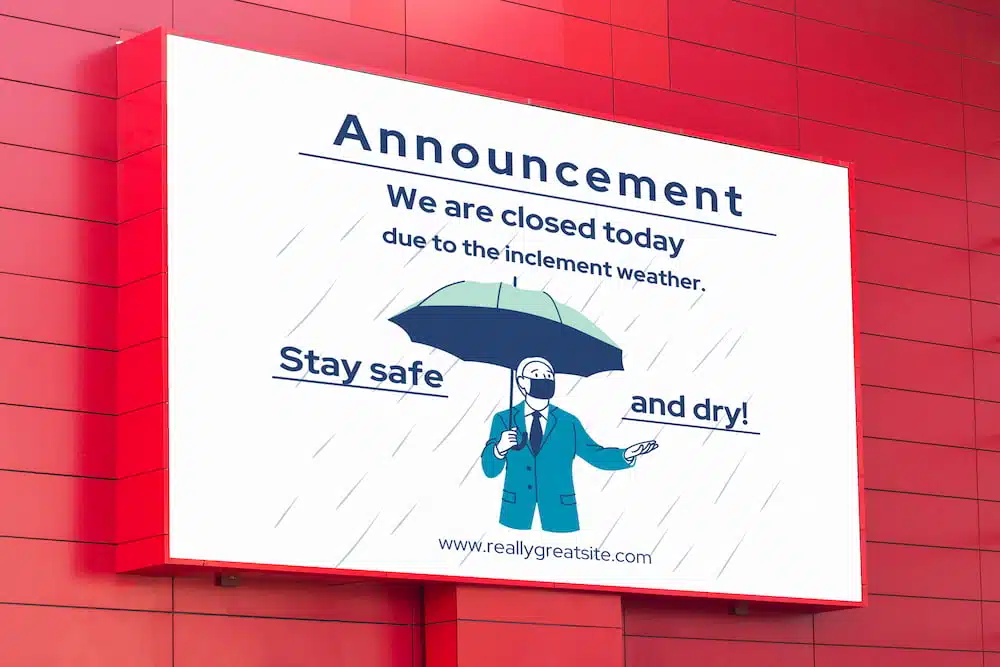
Improving Warehouse Productivity with Warehouse Digital Signage
Discover New Possibilities! Click Here to Download Your Free eBook Today and Unlock Expert Insights! Communication is critical in a …

Discover New Possibilities! Click Here to Download Your Free eBook Today and Unlock Expert Insights!
Digital signage is an effective way to communicate with visitors, employers, and customers. While the technology is cost-effective, there are ways to minimize the energy consumption of digital signage.
With energy costs rising and inflation still an issue for us all, it’s important to reduce costs whenever possible. In addition, reducing energy use is an environmentally friendly approach that can save money for you and your business.
How much does a digital sign cost your business? While many factors contribute to the cost, here is one example. A display can draw 190W and, when adding in the expense of running a media player, can cost your business $400 per year. If you have multiple signs, the importance of energy conservation becomes more essential.
The good news is that there are very simple steps to take and practices you can use that will help you dramatically reduce the costs of your digital screens.
Energy conservation in digital signage is at a focal point. Rising energy costs and the importance of sustainable operations are top of mind for any building owner or manager. The importance of energy conservation in digital signage can be a major difference-maker when it comes to your operating budget.
Here is a closer look at some of the benefits of reducing energy consumption with digital signage and practical tips to lower your operating costs without compromising quality.

One of the most critical decisions you can make when it comes to digital signage is the hardware you choose. By selecting energy-efficient displays, you will dramatically reduce your energy consumption and costs.
Consider using LED, LCD, or OLED displays. Each provides lower energy consumption than other options.
The display may be contingent on the kinds of images and other visuals you display. An OLED display, for example, will use 60 percent to 80 percent of the energy of an LCD for most images.
However, the differences are significant. An OLED display uses 40 percent of an LCD display for primarily black images, due to the lack of need for backlight, However, for primarily white images, an OLED display uses more than three times the power of an LCD device.
While LCD and LED displays may be more expensive, in recent years they have become more energy-efficient. In the long run, they will save you money on energy consumption.
Using Energy Star-certified devices is another smart choice. Energy Smart digital signage devices are more efficient and have cooler-running panel technologies that save money.
Signage displays with an Energy Star certification are, on average, 4 percent more energy efficient than other options. For simple displays, that can mean a $25 savings throughout its lifetime. For a 3×3 video wall, the savings are nearly $230 over the technology’s lifespan.

Once you’ve decided on the digital display hardware, you can think about the way you operate the screens to save energy. The first thing to consider is the content you display.
Consider using compressed media formats that will not compromise the quality of the content you’re displaying. Converting your content to MPEG-1, MPEG-2, MPED-4 or H.264 formats will save energy. Using lower-resolution images can help reduce energy usage, too.
Today, digital screens have sophisticated user controls that allow for scheduling when the screens are on. Consider reducing usage or turning screens off completely during off-peak hours or when there is little to no traffic in the area. Using remote management tools to power off unused displays preserves the lifespan of your equipment and saves energy.

Sensor technology can add additional cost-savings. Occupancy sensors can be used to trigger the on-demand activation of your digital signage. Utilizing occupancy sensors for on-demand activation means your screens are only in use when there’s an audience present.
Your screen’s brightness also can reflect the time of day and whether anyone is present. Using ambient light sensors and motion detectors can adjust brightness – which is a major source of energy use – as necessary for different times of day and night. Automated brightness controls are a great way to save resources.
Internet of Things (IoT) technology can connect sensors and meters that track energy usage. You can use these data points to adjust controls to save money.

The display screen settings are designed to enhance the performance and clarity of your devices. However, they are also very useful for managing energy usage and are one of the best ways to minimize the energy consumption of digital signage. Strategic use of these settings can reduce the costs of display screen operations.
The controls allow you to manage the idle times or sleep modes for each display. These settings can be a useful tool in energy use management.
You can also adjust the color choices in the content you create. Building content in “dark mode” means there’s less contrast and more use of darker color palettes, which means less power is used when displaying the content.
Be sure to look for “eco-mode” or “low-power mode” options on your displays, which will lower energy use.

Consider using alternative, renewable energy sources for your signage.
If you have solar panels or wind energy as part of your energy system, you can use them to power your digital signage.
Renewable energy sources have several advantages, including:
However, there are some downsides to using renewable energy. There are often high upfront costs to install. There are geographic limitations to which systems can be used. In some cases, such as wind, the use can be intermittent and inconsistent.
Some digital screen users choose a hybrid system of renewable and traditional power sources to run their equipment.

One of the best ways to ensure that your screens are optimized is to conduct regular maintenance on them. These steps will help ensure that screens are operating efficiently and saving the most energy.
Cleaning screens and vents ensure that the devices are properly ventilated and cooled properly. Adding energy-efficient components and updating firmware when available are important steps to take.
In addition, be sure to monitor the energy use and performance over time to determine your costs and identify steps to take to adjust controls or equipment.

Many employees in your organization may not think about energy conservation when it comes to digital signage. Educate your staff about how the screens work, best practices for minimizing energy usage, and what they can do to conserve resources.
Employees may see patterns or performance issues that you are unaware of. Anyone who is working in the same space as digital signage can be a valuable resource, providing feedback and insights that can be critical to saving money.
Digital signage is a powerful asset. To get the most out of your digital signage, consider taking steps to save resources and energy usage.
From the hardware you use and the settings you control to the maintenance and staff education you do, you can promote energy conservation in digital signage. You will be doing your part to reduce energy costs for your business while helping the environment.
S3 Technologies helps companies across sectors with digital signage solutions. To learn more about our energy-efficient digital signage, contact us today.

Discover New Possibilities! Click Here to Download Your Free eBook Today and Unlock Expert Insights! Communication is critical in a …

If you’re an HR or Communications leader, have you ever considered making your corporate messages hit the right note? Well, …

Digital signage health and safety helps manage staff members and can also help ensure the safety of your employees. Notifying …

When shift labor is involved, three distinct eight-hour shifts are typically worked in 24 hours. A manager is normally assigned …